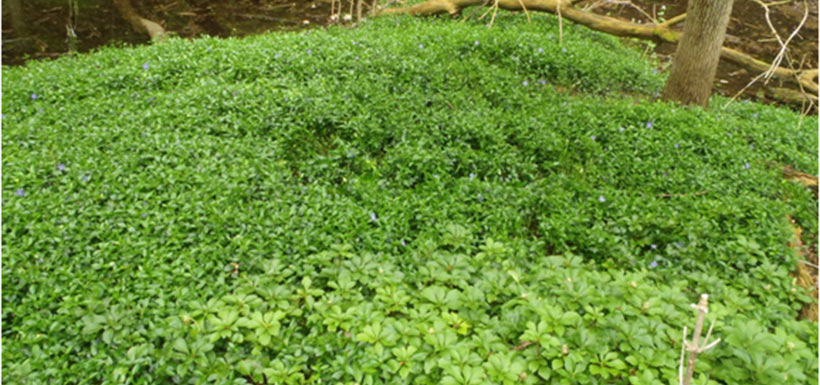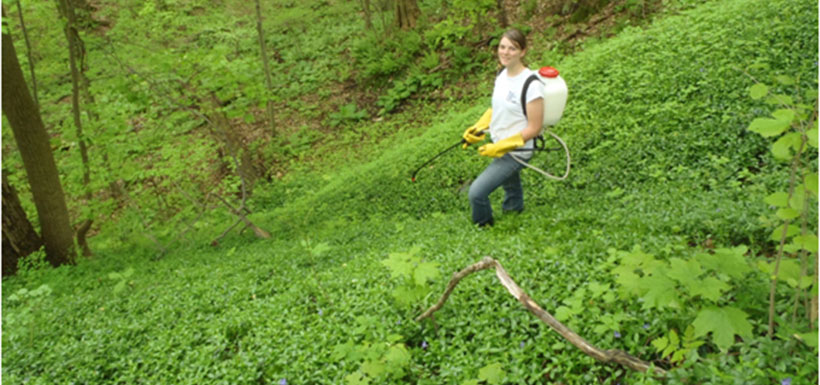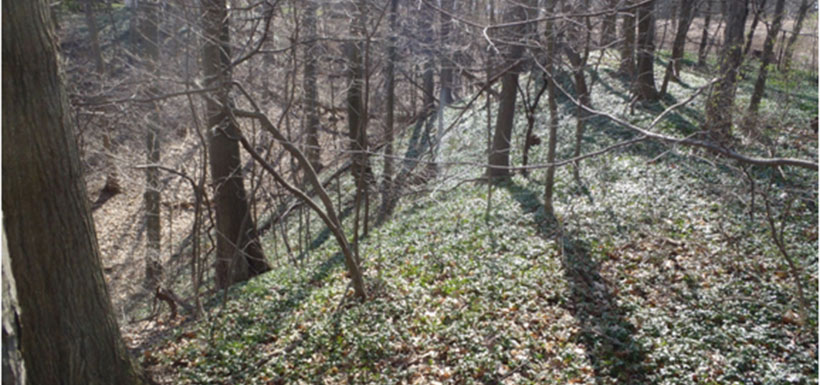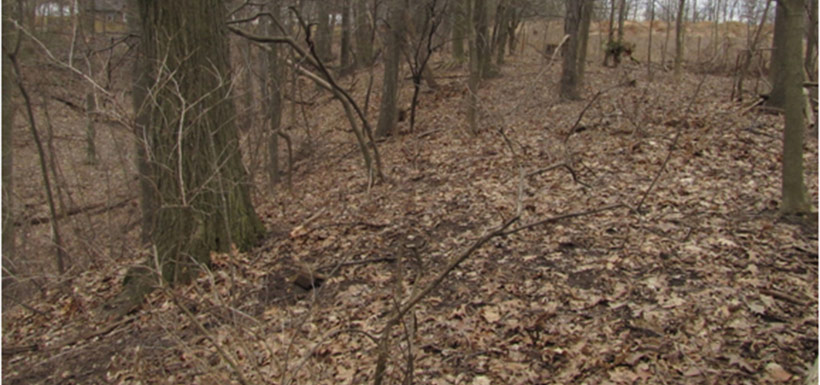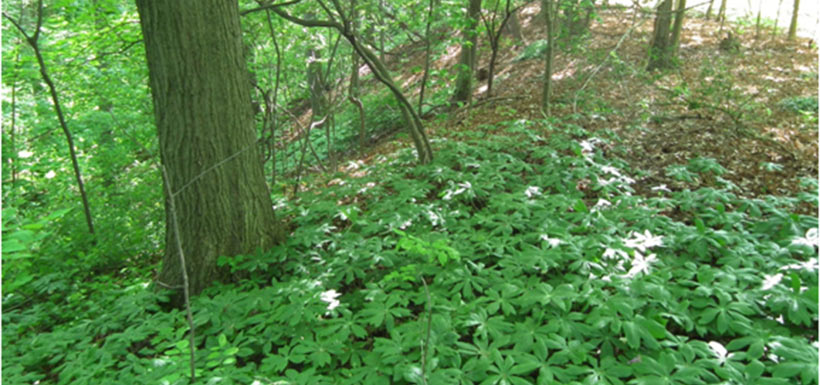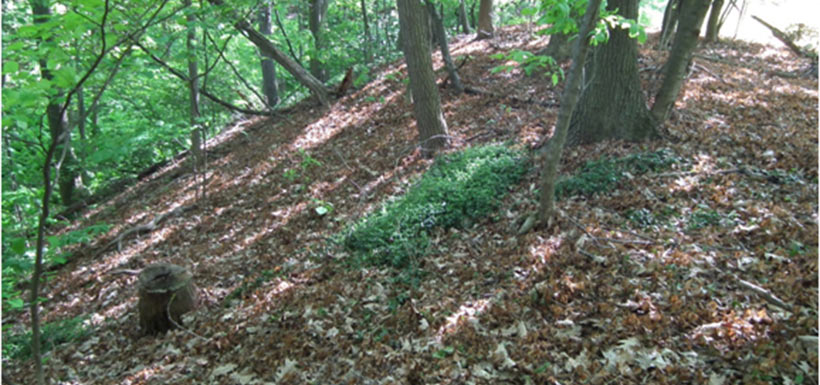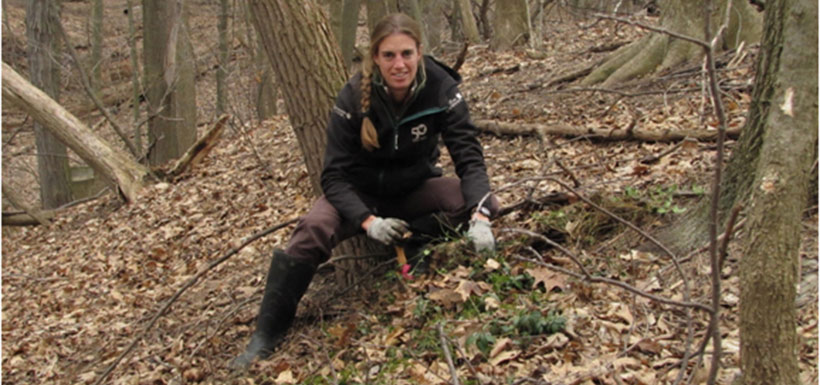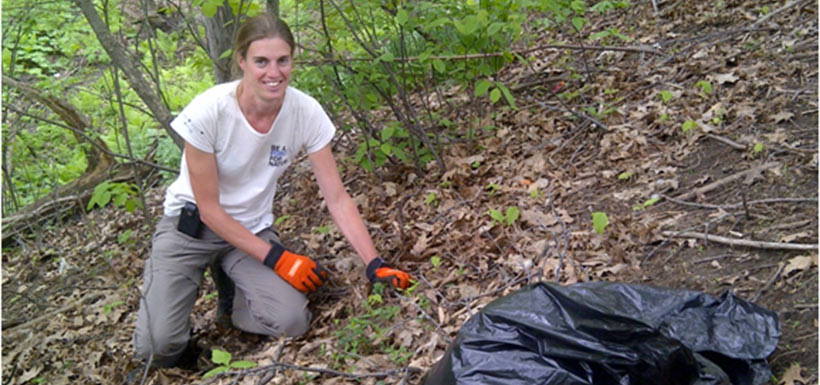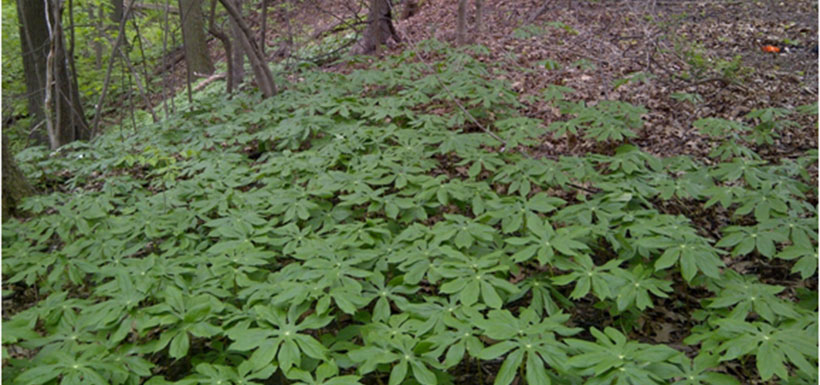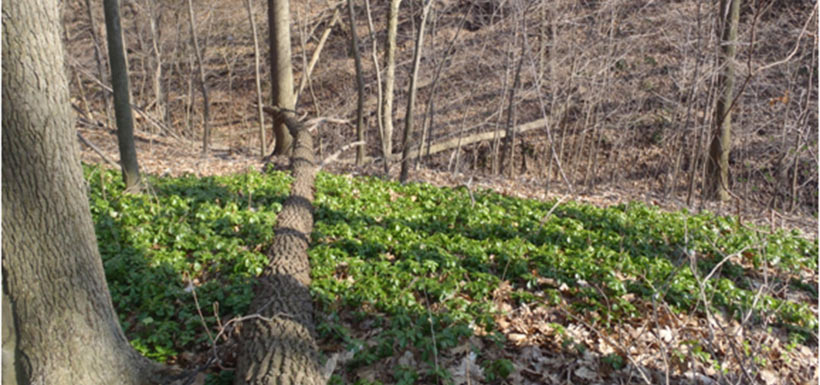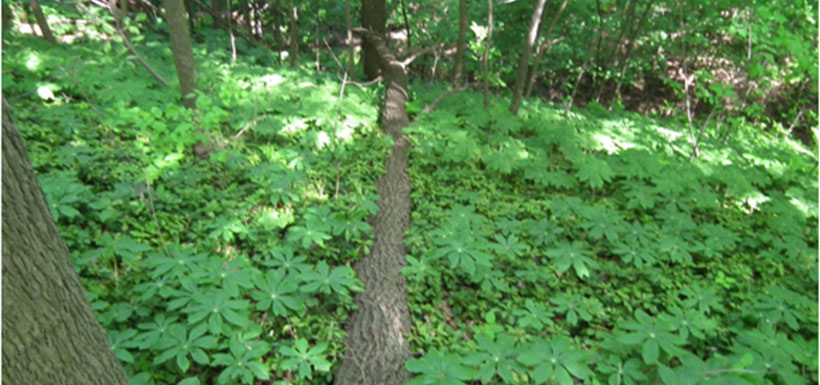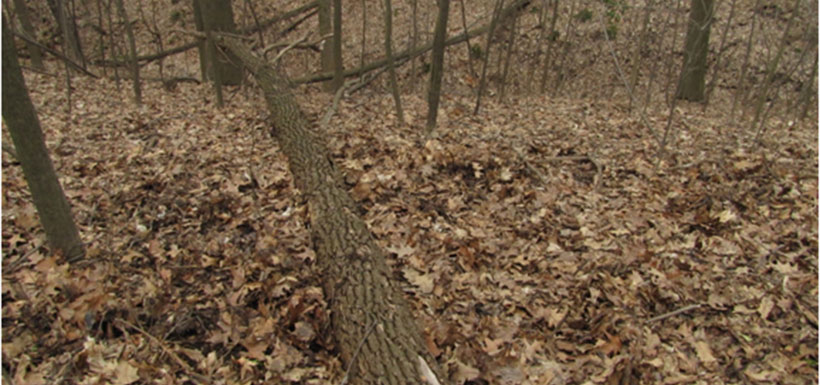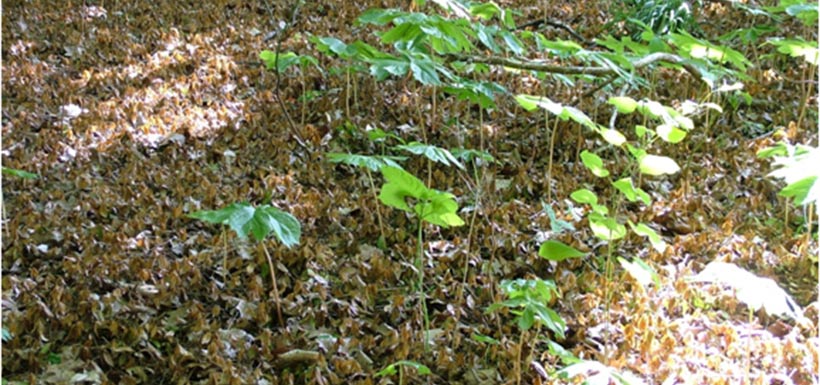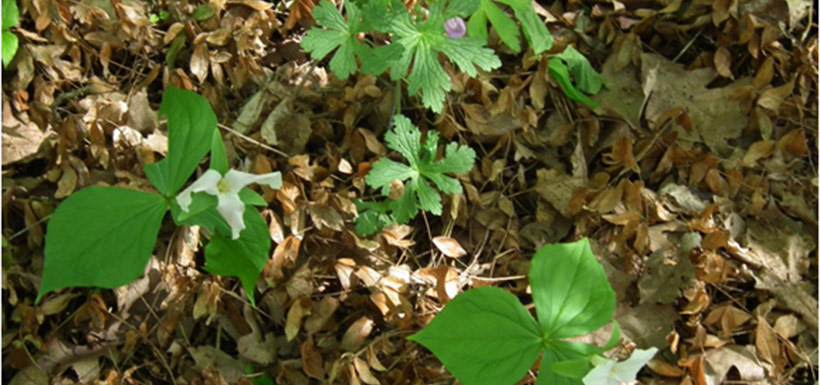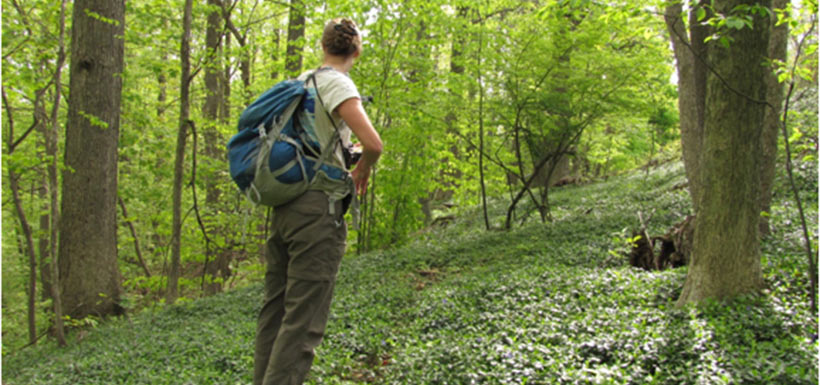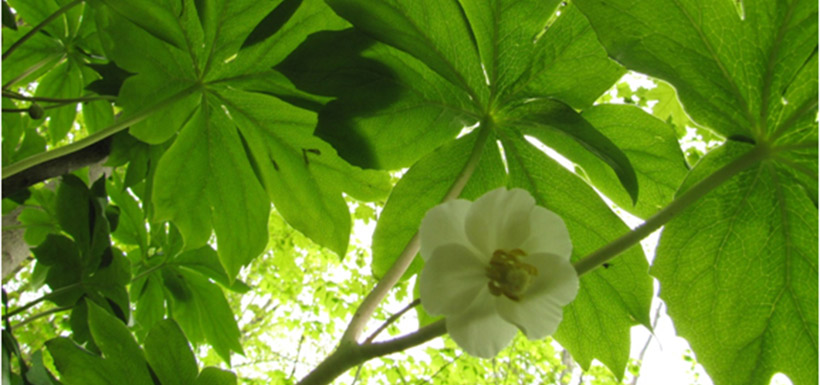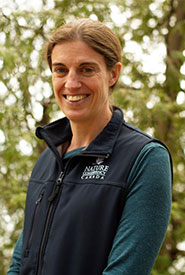Dealing with the periwinkle problem
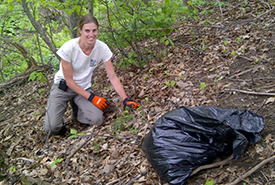
Hand pulling periwinkle (Photo by NCC)
Jill and I did some follow up to some invasive species removal we did last year at Lathrop. Just a few fragments of the very invasive Periwinkle left! We picked them out by hand, leaving the native mayapple, trillium, Jack-in-the-pulpit and jewelweed to further expand and fill the few remaining gaps.
All to the wonderful sounds of woodthrush, eastern wood-pewee and Hooded Warblers singing — having recently returned to start nest-building at Lathrop. They should now have more insects to feed their chicks because of our invasive species removal work.
Click on the slideshow below for more detailed information about each picture.

